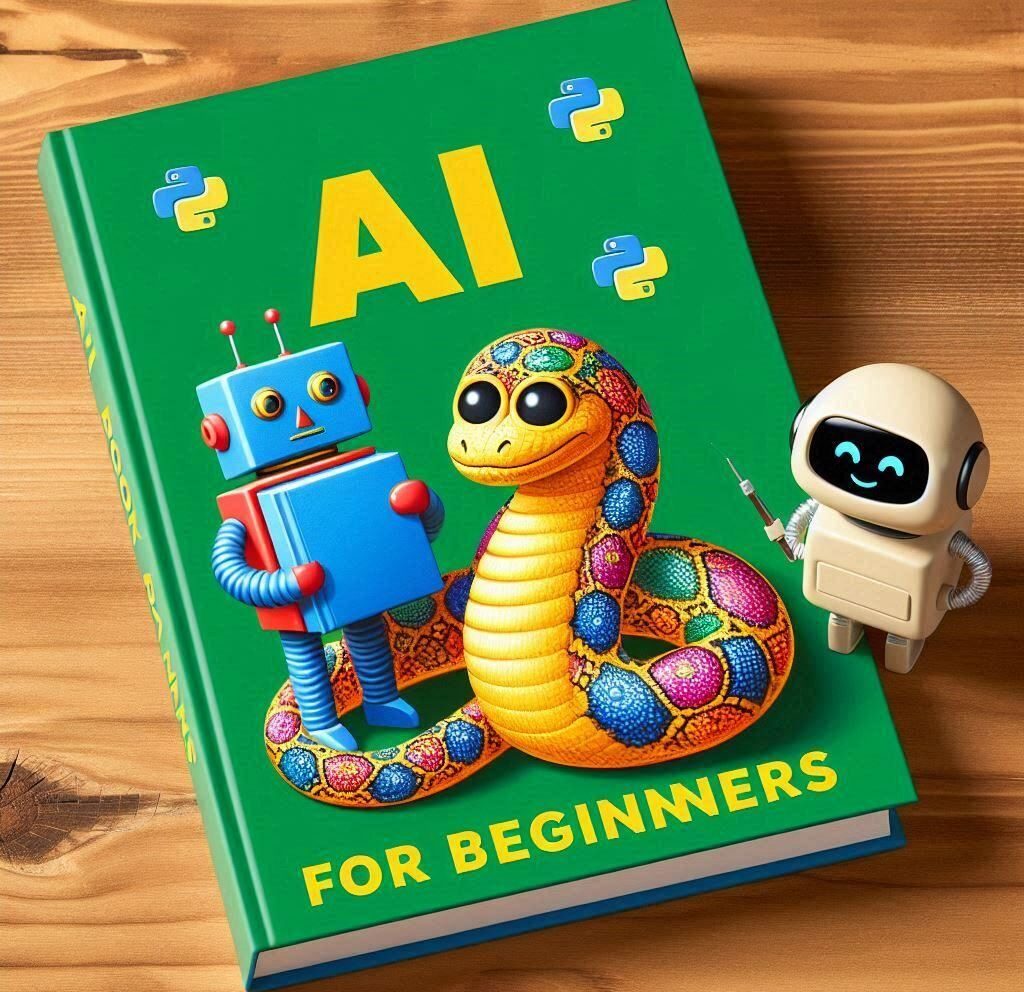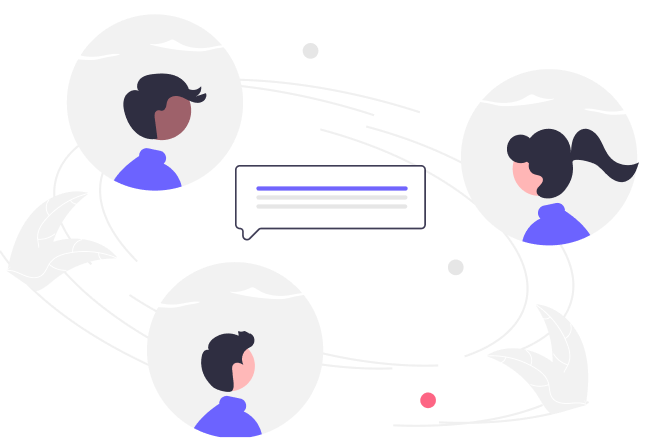
Introduction to AI and ML
🧠 Course Overview:
Welcome to the World of Artificial Intelligence and Machine Learning!
This comprehensive course is your gateway into the exciting field of AI/ML. Designed for middle/high school students, college learners, and early professionals, it blends solid theoretical foundations with hands-on practical applications. You’ll explore how AI and ML are shaping industries like healthcare, finance, robotics, and gaming, and gain the skills to build your own intelligent systems.
Whether you're aiming to be a data scientist, AI engineer, or just want to understand the tech that powers the modern world — this course will give you the tools to begin that journey.
🧩 What You Will Learn:
-
Introduction to AI and ML: Key concepts, history, and how AI is impacting the world
-
Mathematical Foundations: Core statistics and probability for ML
-
Data Analysis: How to explore, clean, and prepare data for machine learning
-
Machine Learning Fundamentals: Understanding models, learning processes, and data pipelines
-
Supervised Learning:
-
Linear regression and classification techniques
-
Decision trees, random forests, k-nearest neighbors
-
-
Unsupervised Learning:
-
Clustering techniques like k-means
-
-
Model Evaluation: Accuracy, precision, recall, confusion matrix, and cross-validation
-
Resampling Techniques: Bootstrapping, train/test splits, and k-fold CV
-
Neural Networks: Basics of deep learning and DNNs
-
Reinforcement Learning: Introduction to agents and decision-making
-
Real-World Applications: AI in apps, games, robotics, healthcare, etc.
-
Ethical AI: Bias, fairness, and responsible AI use
💻 Tools & Technologies:
-
Programming Language: Python
-
Libraries: scikit-learn, NumPy, Pandas
-
Projects:
-
Image classification
-
Spam email detection
-
Game-playing agents (simple RL)
-
🎓 Course Features:
-
Structured Curriculum: 10+ well-organized sections, 110 bite-sized lessons
-
Hands-on Projects: Real-world datasets and guided model-building exercises
-
Live Support: Q&A sessions and instructor assistance
-
Flexible Learning: Recorded lessons and downloadable resources
-
On-site Option: In-person classes available for select locations
🎯 Ideal For:
-
Middle/High school students with basic Python knowledge
-
College students or professionals curious about AI
-
Future tech innovators and problem solvers
-
Anyone wanting to explore how machines learn and think
⏳ Duration:
10 Weeks
-
1 session per week
-
~1 hour per session (plus self-paced exercises)
📘 Prerequisites:
-
Basic algebra and statistics
-
Some experience with Python programming
📦 Materials Included:
-
Full access to video lectures and code walkthroughs
-
Python notebooks, datasets, and templates
-
Additional readings and practice quizzes
✅ Learning Outcomes:
By the end of this course, you will be able to:
-
Understand and explain core AI/ML concepts
-
Build and evaluate basic machine learning models
-
Apply models to real-world datasets
-
Explore more advanced AI topics with confidence
🚀 Ready to Start?
Join Us Today and take your first step into the future of technology.
Curriculum
- 13 Sections
- 137 Lessons
- 8 Quizzes
- 0m Duration
Introduction to AI and ML
- Introduction to AI and Machine Learning
- 📚 The History of AI/Machine Learning
- Advanced topic: Marvin Minsky's claim trigger the first AI Winter
- 📘The Big Paradigm Shift: From “Coding Rules” to “Learning from Data”
- Overview of Machine Learning Workflow
- 🧠 Building Machine Learning Solutions with Responsible AI
- 🤝 Advanced topic: Fairness in Machine Learning
- Some questions for AI/ML
Math ( Statics ) Foundation
- 🧠 What is a Function?
- Homework: Functions
- 🎲 Introduction to Probability
- 🎓 Basic Rules of Probability
- What is Conditional Probability?
- Advanced topic: joint probability P(A, B) or P( A && B)
- Homework: Table and Probability
- 📘 Understanding Bayes’ Theorem
- 🎯Advanced topic: Frequentist vs Bayesian Probability / Inference
- HOMEWORK: Baye's Theorem
- 🎲 Uniform Distribution: Discrete vs. Continuous
- 📊 Probability Distribution & Gaussian Distribution
- 📘 Mean and Variance
- 📊 Advanced topic: Covariance and Correlation
- 📘 Logarithms introduction
- 📘 Entropy, Cross-Entropy, and KL Divergence
- Advanced topic: 📘 Entropy and Information Bits
- Advanced topic: Why do we use log(1/p) (or −log(p)) to define information in bits? Why not just use 1/p?
- Advanced topic: Mutual information (MI)
- Advanced topic: Universe, Maximum Entropy, and Distribution Shape: What Happens?
- 🔶 Advanced topic: Summary: Shannon Entropy vs. Thermodynamic Entropy
- Advanced topic: P/NP
- HOMEWORK: Entropy and KL
- 🧮 Linear Algebra Basics — Vectors, Matrices, and Matrix Operations
- Advanced topic: why KV divergence will not defined as H(Q) - H(P)?
Data Analysis
- Introd Jupter
- Writing and Using Markdown in Jupyter Notebook
- VSCode and Jupternotebook
- 🧑🏫 Google Colab : How to Use It and Install Python Packages
- 🧮 LaTeX Math in colab
- 🎓 Google Colab Assignments
- 🧠 Matrix for Beginners — Understand Matrices and Use NumPy
- Analyzing Numerical Data with NumPy
- 🧠 Advanced topic: What is NumPy Broadcasting?
- 🎓Matrix Operations Using NumPy
- 🧠 Math for Understanding Pandas
- Analyzing Data Using Pandas
- Advanced topic: pandas.crosstab
- 🧠 NumPy vs. Pandas: When to Use Each?
- 📊 Math Concepts Behind Matplotlib Visualizations
- 🎓 Visualization with Matplotlib
- Visualization Using Seaborn
- 📊 Math Concepts Behind Exploratory Data Analysis (EDA)
- Exploratory Data Analysis
- Adanced topic: EDA and model selection/desgin
- Exploratory Data Analysis (EDA) for Housing Prices
- HOMEWORK : EDA ( Titanic data)
- 🏫 EDA Homework solution: Titanic Survival
- 🔍 Exploratory Data Analysis: Credit Card Fraud Detection
Machine Learning Fundamentals
- 📘 Introduction to Types of Machine Learning and Common Algorithms
- Advanced topic: What is R² Score (R-squared)?
- 📘 Types of Machine Learning Problems (Based on Output)
- Advanced topic: Regression vs. Classification Problems with details
- 📘 How to Learn from Data in Machine Learning
- 🧠Advanced topic: Machine Learning Philosophies, Approaches
- ✅ Advanced topic: Why Can Machine Learning Be Treated as a Probability Problem?
- Advanced topic: What is difference between Statistical Learning and Machine Learning
- Dataset Splitting: Training, Test, and Validation
- Advanced topic: what happen if model perform poor on testing-dataset?
Supervised Learning - Regression
- 📘 Supervised Learning
- 🤖 Getting Started with scikit-learn
- Advanced topic: sklearn techniques
- Supervised Learning: Linear Regression
- Advanced topic: Why Use Mean Squared Error (MSE) in Regression?
- 📘 How We Really Do Machine Learning (Supervised Learning Edition)
- 📘 Under the hood: Loss Functions in Machine Learning
- Advanced topic: cost(x) = x^2 + 2x +1, to find the minimum cost
- 🎓 Advanced topic: Gradient Descent
- Advanced topic: Numerical Gradient, Analytical Gradient, and Automatic Differentiation
- Advanced topic: MLE and MAP in Machine Learning
- 📘 How Loss Functions Connect with MLE, MAP, and Priors
- Advanced topic: Supervised learning generative and discriminative approach
- Regression using DecisionTree, RandomForest
- Advanced topic: How Does a Decision Tree Regressor Choose the Best Split?
- Advanced topic: Other regression algorithms
- 📚 Homework: Predicting Disease Progression (Diabetes Dataset Regression)
Supervised Learning - Classification
- Supervised Learning – Classification
- 📊 Classification Model Evaluation
- 🧠 What Happens Inside model.fit() in Scikit-learn?
- Advanced topic: multi-category classification
- Advanced topic: class imbalance
- 🌟 What is the Loss Function for Logistic Regression (Logit)?
- Advanced topic: deep dive into classification with cross-entropy loss.
- Difference Between Logistic Regression and Linear Regression
- Naive Bayes Classifier: Detailed Explanation with Example
- 🧠 Naive Bayes Classifier in Python (with Real Dataset)
- 🔎 Advanced topic: What is TfidfVectorizer?
- 🔎 Advanced topic: What is MultinomialNB()?
- K-Nearest Neighbors (KNN) Algorithm
- 🌟 Advanced topic: What are Non-Parametric Methods in Machine Learning?
- 🎯 Advanced topic: What is Linear Discriminant Analysis (LDA)?
- Advanced topic: other classification algorithms
- HOMEWORK: Supervised Learning – Classification with Scikit-learn
Model evaluation
- Model Evaluation: Performance Metrics and Error
- Understanding Bias and Variance
- Advanced topic: Understanding Variance More Deeply
- Overfitting, Underfitting
- False Positives, False Negatives, and AUC-ROC Curve
- Advanced topic: P-R curve vs RoC curve
- Hypothesis Testing
- Advanced topic: Relationship Between Hypothesis Testing and Machine Learning
Resampling methods
- How to Sample from a Probability Distribution
- Advanced topic: Math details for PDF, CDF, Inverse CDF
- Resampling Methods
- Why Do We Need Cross-Validation?
- Bootstrap
- Advanced topic: why sample 100 points even if we only have 100 points in the original data.
- How Bootstrap Helps in Machine Learning Model Evaluation
- Advanced topic: Bootstrap vs. Cross-Validation
- Dimension Reduction Methods
Advanced ML
- Supervised Learning – Decision Trees and Random Forests
- Advanced topic: Tree-Based Methods GBM, XGBoost
- Support Vector Machine (SVM)
- 📘 Markov Models in Machine Learning
- 📚 Common Modeling Principles (Organized by Philosophy)
- 📘 Maximum Entropy Model
unsupervisied learning
- Unsupervised Learning: Clustering , K-Means
- Discussion: can unsupervised method handle regression and classification problem?
- 🧠 What is Semi-Supervised Learning?
- Advanced topic: why the Expectation-Maximization (EM) algorithm can estimate the correct parameters
- Other typical algorithms for unsupervised learning
Neural Networks and DNN
- 🧠 Neural Networks & Deep Learning
- 📚 Advanced topic: Universal Approximation Theorem: Foundation of Neural Networks?
- 🤔 Should Machine Learning Be Treated as a Probability Problem or an Optimization Problem
- 🤖 Deep Learning Frameworks: PyTorch vs TensorFlow vs Keras vs ONNX
- 🎯Detailed analysis : Classify the XOR Dataset
- 🧠 Advanced topic: Backward Propagation
- Advanced topic: Backpropagation without a Closed-Form Formula,
- 🔢 Simple Neural Network for MNIST Classification (PyTorch)
- 🧠 CNN Tutorial with PyTorch (Image Classification)
- 🧠 Word-Level Text Classification with RNN in PyTorch
- 🔁 Transformer Tutorial in PyTorch (Text Classification)
- 🧠 Other Types of Neural Networks (Beyond DNN, RNN, CNN, Transformer)
Reenforcement Learning
- Reinforcement Learning
AI in real world
- Advanced AI Techniques
- AI in the Real World
- Practical AI Applications

